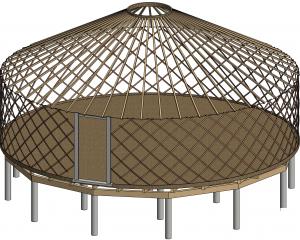Central Otago and Queenstown Lakes District Council staff are working on a plan that could lead to all the region's sewage sludge being converted into fertiliser on one site. But, as Mark Price reports, that could leave a QLDC proposal for a Luggate sludge plant high and dry.
For almost 18 months Luggate residents have been expecting Fulton Hogan to start building a sludge-drying plant just over the Clutha River from the township.
It was to have been a big glasshouse using the latest German technology to dry the sludge from Wanaka's Project Pure sewerage system so it could be used as fertiliser.
At present, the wet sludge is trucked 70km to a landfill at Victoria Flats in the Gibbston Valley, near Queenstown.
Infrastructure and resources company Fulton Hogan, in partnership with the Queenstown Lakes District Council, was granted resource consent for the Luggate plant in October 2014.
The lack of progress since then has puzzled Luggate residents, many of whom opposed the plant because of the truck traffic it would generate and potential health risks.
The Otago Daily Times has now been told the council is taking another look at what it called "Project Groundswell''.
Council's infrastructure general manager Peter Hansby said in an email this week that "before committing'' to a 20-year solution for Wanaka, the council had asked staff to investigate "a number of wider sludge solutions''.
These would be designed to meet the entire district's long-term need for sludge management, Mr Hansby said.
The investigations would cover "a range of technologies, as well as the location and scalability of future facilities'', he said.
Mr Hansby's comments are the first the council has made about the lack of progress on the Luggate plant since the resource consent was granted.
They open the door to the idea of a new plant at a new site serving not only Wanaka but also Queenstown and possibly even Cromwell and Alexandra, which lie within the Central Otago District Council's area.
Deputy mayor Lyal Cocks told the ODT although the council was looking at whether the Luggate plant was "the most suitable'' in the long term, it remained "one option'' being investigated by staff.
"There have been some new members in the engineering department who are having a fresh look at it.''
Mr Cocks said the council would not only have to deal with sludge from Wanaka's Project Pure, it would also need to cope with sludge from Queenstown's $23.6 million Project Shotover sewerage system, due to be commissioned later this year.
"We are looking at reviewing the whole thing - quantities of sludge and the long-term viability of the options for getting rid of it.''
Besides the quantity, there were other factors to consider including the cost of transport and the "quality'' of the sludge.
"So it's a big issue.
"It has sort of taken a lower priority while we have been getting Project Shotover under way.
"Now we are giving it quite a big push to come up with an agreed solution.''
Central Otago Mayor Tony Lepper said this week he understood engineers from his council were discussing sludge with their Queenstown counterparts.
"It would be stupid if they weren't talking together.''
Mr Lepper said the Central Otago council had sludge issues at all its plants, particularly Alexandra's.
"We're waiting on our engineers to come up with a solution.
"It amazes me that there isn't a national solution to sludge problems.
"Everyone seems to be working on different projects, so any chance we can collaborate with our neighbours would be gratefully received.''
Mr Lepper believed it would be logical to have one plant processing all the sludge from the two council regions.
The Central Otago council also dumps its wet sludge at Victoria Flats at present, something Mr Lepper did not consider sustainable.
"If we could find a regional solution, that would be brilliant.''
Luggate Residents Association chairman Graeme Perkins said residents "wouldn't be at all unhappy'' if a plant was not built near the township.
Mr Perkins said he could see the logic of a bigger plant in a more central location "rather than a little facility in a corner of Luggate that would only solve a little part of the problem''.
"They're obviously thinking big and thinking further ahead, so that can only be a good thing.''
The rumour of the possible demise of the Luggate plant has been circulating in the township for some weeks, and appears now to have been correct.
However, the ODT has not been able to substantiate or disprove a second rumour, that Fulton Hogan is considering taking the council to court over the matter.
Fulton Hogan regional manager Paul Bisset, of Alexandra, declined to comment this week and Cr Cocks professed no knowledge.
What is Project Groundswell?
The Luggate sewage sludge-drying plant as described by the Queenstown Lakes District Council on September 25, 2013:
"An innovative natural system for turning sludge into fertiliser will also be a money-saver for Wanaka ratepayers.
"Once dry, the material would be ploughed into the ground at two neighbouring properties and would improve the fertility of the soil, which would then be used to grow silage or hay.
"The solar-drying facility would use German WendeWolf technology, which is widely used in Europe and North America, and has also been installed in Toowoomba, Australia.
"The simple greenhouse-style building uses a combination of vents, flaps and fans to keep air flowing inside [to] dry the sludge naturally.
"As the moisture evaporates, the volume of material reduces so that for every 1000 tonnes of sludge brought to the facility, between 100-200 tonnes of dry matter will be left.
"If the project goes ahead, it will provide annual savings of $113,000, which is $23.54 a year for every household in Wanaka and Albert Town connected to Project Pure.
"There is no capital cost to QLDC because Fulton Hogan will build and operate the drying facility, and the council will pay a set rate for every tonne of sludge dried there.''
- Source: QLDC











